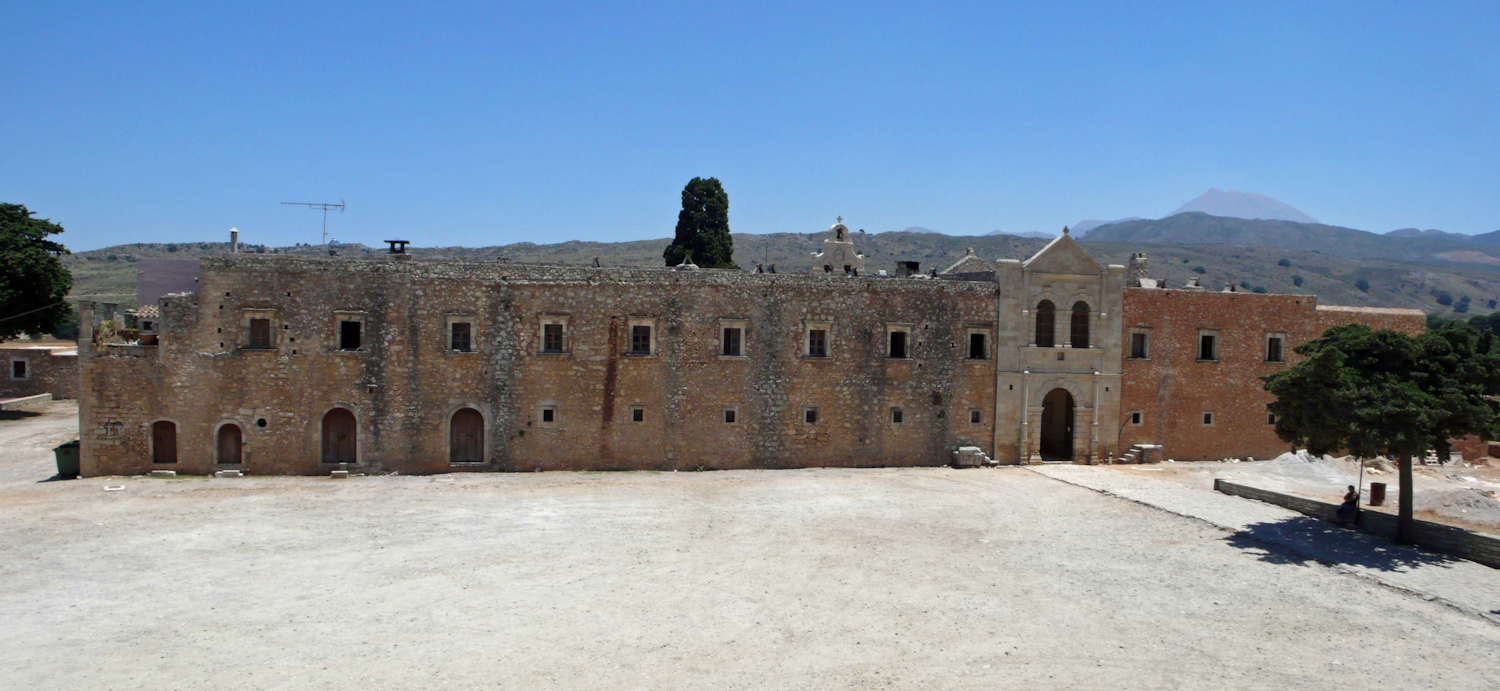The Arkadi Monastery
A Shrine to Cretan Resistance
The Monastery of Arkadi (open daily 8am to 8pm) is the island's most famous monastery. Due to the role it played in the fight against the Ottoman rule on Crete it has become something of a national Cretan shrine to the struggle for independence. But the architecture and the scenic location of the monastery is in itself a good reason for visiting the place.
The History of the Monastery
The present 'Moni Arkadiou' was built during the Venetian period but the history goes further back into the Byzantine era. It used to be one of the richest monasteries on the island and it played an important role in the cultural life of Crete having a rich library and a school. It consists of a large set of fortress-like buildings and several times it has served as a refuge in times of trouble.
This was also the case in the 1866 rebellion when 259 of Cretan guerrillas and their families - some 700 women and children - took refuge in the monastery surrounded by a Turkish army of 15.000 men. After a siege of two days the defences were breached. As the Turks poured in one of the rebellions, Kostis Giamboudakis, deliberately blew up the powder magazine. The explosion reduced the monastery to a pile of rubble killing hundreds of people - Cretans and Turks alike. All in all the Greeks killed over 3.000 Ottoman soldiers in the battle. Afterwards most of the surviving guerrillas were executed.
An English traveller, J. Hillary Skinner, visited the place the following year and described how 'scores of bodies unburied, half-buried, sun-dried and mangled [are] to be seen within the monastery'. There was much international sympathy from European countries for the cause of Cretan independence and this dramatic expression of the cry for 'Eleftheria i Thanatos' - 'Freedom or Death' the slogan of the Cretan resistance fighters - did much to promote this.
The Buildings
The elaborate central entrance was restored four years after the 1866 explosion. It leads to an interior court, through a vaulted passage. In the middle of the court, stands the impressive church of the monastery. It has two naves dedicated to Saint Constantine and Saint Helen, and to Our Lord. The church was completed in 1587 and is a beautiful example of Cretan architectural art of the 16th and 17th centuries. (It used to be a motif on the 100 Drachma note). Surrounding the courtyard are vaulted passages with rows of arches. There are cells on three sides of the court and communal rooms on the north side. There is a small museum in the monastery with icons and other religious artefacts as well as relics of the 1866 disaster.

